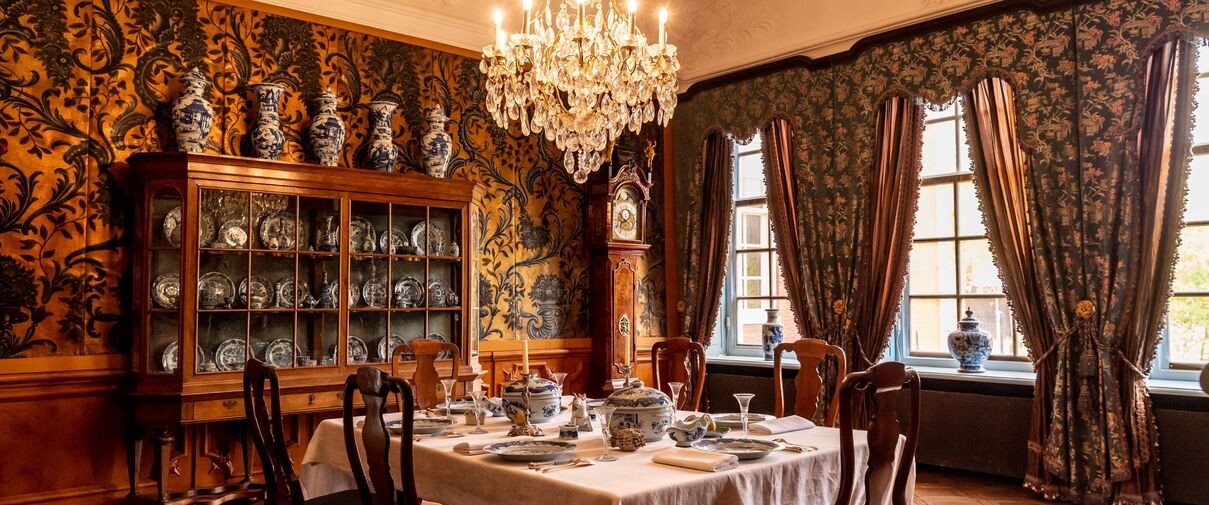Marijke Meu’s dining room
Marijke Meu's city palace
Have you ever wondered how the Princessehof National Museum of Ceramics got its name? Many of the people who live in Leeuwarden are familiar with its history, but most visitors to the museum do not know that this building was once the home of Marie Louise of Hesse-Kassel. She is the matriarch of our royal family who became the darling of the people. The Nassau Room in the museum is a time capsule of the period when she lived here.
Marie Louise, from a large noble German family, married John William Friso of Nassau-Dietz, stadholder of Friesland and Groningen, in 1709 at the age of 21. Unfortunately, the marriage was short-lived. John William Friso drowned when the ferry he was travelling on capsized during a summer storm. Marie Louise was only 23 years old at the time. She had a young daughter and was heavily pregnant with her second child. One month after the death of John William Friso, their son William Charles Henry Friso (William IV) was born. The succession was thus secured, but it would be some time before he could assume the duties of stadholder. Marie Louise decided to fulfil this role until her son came of age.
William IV was ready to assume his duties as stadholder when he turned 20. For Marie Louise this was a good time to find her own place to live. She bought several adjacent houses on the Grote Kerkstraat in Leeuwarden, and asked the famous French architect Anthonius Coulon (1682-1749) to connect them with each other. Thus did the Princessehof come into being. Marie Louise was content in her new city palace. It was decorated in the then fashionable Baroque style. This can still be seen in her former dining room, now called the Nassau Room. The walls are covered with precious gold-leather wallpaper that Marie Louise applied herself. The ceiling decorated with stucco, the wooden panelling and the marbled fireplace with a gilded mirror frame are also elements of the original interior. A profusion of Chinese and Japanese porcelain is displayed, as was common in wealthy circles at the time, and the table is set with Frisian silver and Chinese porcelain. There is a seventeenth-century cabinet made of Japanese lacquer by the window. The curtains were woven in France after an eighteenth-century example.

